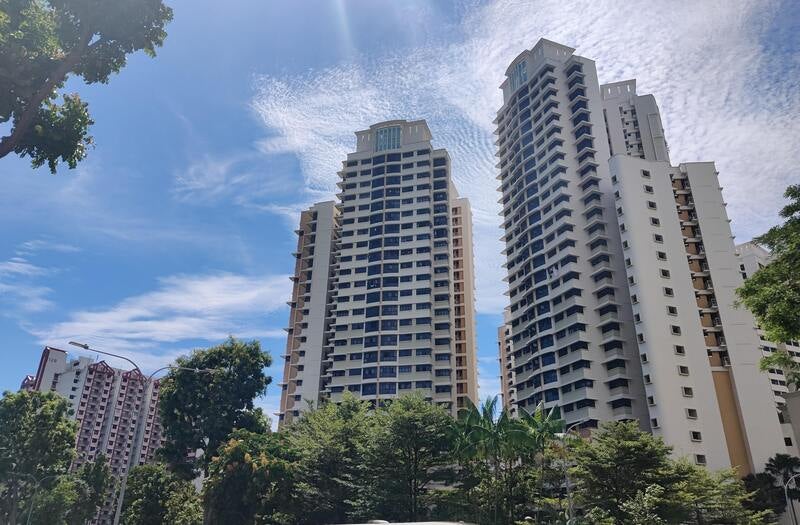Making ubiquitous home ownership viable for the long term
20 December 2021

Over a pandemic year that has seen Covid-19 and its mutations continue to harass economic recovery, the ebullient residential market in Singapore has persisted in going against the grain, and now threatens to surge ahead of economic fundamentals if left unchecked.
In the first half of this year, 106 public flats exchanged hands for over S$1 million, while the URA Property Price Index of Residential Properties rose by 5.3% for the first three quarters of 2021, on the back of a 2.2% rise in 2020.
Household debt, as a percentage of the GDP, rose to 70% in the third quarter of this year, and mortgage loans accounted for the bulk of this increase. To an alarming extent, many households are literally living on borrowed money.
A landscape of risk and uncertainty – which ought to have encouraged financial prudence – have on the contrary triggered a buying spree that sought to take advantage of the low cost of credit.
Managing credit risk and default
The 2008/09 global financial crisis followed after a housing bubble in US burst: reckless risk assessment accompanied by equally reckless borrowing eventually led to many speculators, including “subprime” borrowers, to default on their debt obligations. While the number of subprime borrowers was not large, it created a contagion effect. Amid a depressing flurry of broken promises to repay, market confidence vanished and commerce ground to a halt.
Lessons from the global financial crisis remained fresh, and governments worldwide have taken a more active approach to ensure financial prudence in housing purchases. Likewise, the Singapore Government has intervened in the past when the real estate market became overheated. The most recent round of property cooling measures has aimed to reduce the risk of default through the tightening of the HDB Loan-to-Value (LTV) ratio from 90% to 85%, and reduction of the Total Debt Servicing Ratio (TSDR) from 60% to 55%.
In their commentary in TODAY newspaper, IREUS director Professor Sing Tien Foo and deputy director Dr Lee Nai Jia say that the stricter TDSR “will restrict the liquidity and financing options of those buying their second and subsequent properties” while banks, on the other hand, are protected against “excessive financial risks, especially those with high exposure to real estate debt”.
“Stricter LTV rules on HDB loans reign buyers in from paying excessive prices in the resale market,” they added. In this manner, rent-seeking behaviour on the part of sellers is curbed, while buyers are discouraged from living on borrowed money that could inflate once interest rates rise in tandem with economic recovery.
Weeding out speculation and slowing capital flowing into private residential market
In their August article “The ultra-rich are driving a $24 billion property frenzy in Singapore”, Bloomberg reported that US$24 billion (or S$32.9 billion) were spent on property in H1 2021, which was “double what was recorded in Manhattan over the same six months”.
In the same article, Bloomberg said that in reaction to the pandemic or political uncertainty elsewhere, foreign wealth was pouring into Singapore as tycoons sought safe harbour. For example, Eden – Singapore’s priciest condominium by price per unit floor area at that time – was purchased wholesale by a Taiwanese family for S$293 in April earlier this year.
IREUS’ Professor Sing and Dr Lee opine that “the increase in ABSD rates is expected to have the most significant impact on the private housing market” among the various revisions. The Additional Buyer’s Stamp Duty (ABSD) was raised further in the latest round of cooling measures. Foreigners buying any residential property here now have to pay 30% ABSD (up from 20% previously), while entities now have to pay 35% compared the previous 25%.
Responding to The Straits Times, Prof Sing said that the heftier ABSD rates may help dampen the strong inflow of foreign capital into the higher-end private housing market.
Pegged at such a prohibitive quantum, ABSD forces investors to park their monies over a longer time horizon before their assets break even and start to yield profits. Prof Sing therefore highlights that “ABSD increases transaction costs, and could weed out speculators who expect short-term returns”.
Cooling the en bloc market
The latest slew of “harder hitting” cooling measures is also anticipated to slow down the brisk en bloc market. After staying in the doldrums for 2019 and 2020, collective sales revved up to an impressive S$4 billion worth of deals in H2 2021.
When interviewed by The Business Times, Dr Lee notes that strong en bloc activity tends to push home prices up. "As owners withdraw their listings in anticipation of a collective sale, supply in the open market diminishes, which generates a multiplier effect in demand and prices," he said.
"While developers face lower inventories, they will need time to recalibrate their assumptions and pricing. The focus will turn to government land sales," he continued.
Prof Sing added in a CNA interview that developers will certainly be more selective about their land acquisitions. “The bigger plots will get more and more difficult (to work with) because of the 35 per cent ABSD. To sell big projects – above 500 units – is quite challenging,” he said.
Biting the bullet for the long term
While the latest round of property cooling measures may leave a strong distaste in many industry stakeholders and consumers, a macroprudential policy, however unpopular, is nonetheless necessary.
Singapore is not a country with an ample hinterland elsewhere. When the American Rust Belt deteriorated in the 1970s, the population moved to other states in search of employment. Here, there is nowhere else – and it is therefore important to ensure that home ownership, often lauded as an integral part of the Singaporean Dream, is available to the general populace for many years to come.

